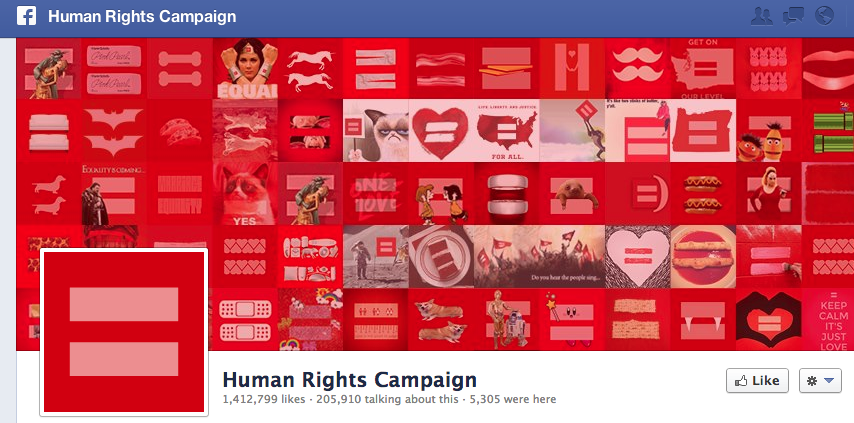Students Support Same-Sex Marriage on Social Networks
March 28, 2013

As the Supreme Court finishes hearing the second of two major cases on same-sex marriage this week, many students at Fordham College Lincoln Center (FCLC), and others around the country, have changed their profile pictures to a pink equal sign on a red background to show support for marriage equality. But while the now-viral symbol is an equal sign, the reasons FCLC students have for adopting it are anything but the same.
“I kept seeing everyone else’s and I felt a kind of moral obligation to change my profile picture,” Tori Campbell, FCLC ’14, said. “I think everyone’s participation in it, because it was so vast, made me feel like I had to participate too.”
Campbell noted that although she felt compelled to follow the trend, she views its impact as being more figurative than actual. “I think it’s nice, but honestly, I think that the main function of it is not going to affect a Supreme Court ruling at all. It’s a way for people to feel like they’re doing something and it makes people feel united. It’s a great gesture, but I just don’t think it will cause political change necessarily.”
Still, other students are more optimistic about the effect that such a gesture could have.
“This logo started a cyber-mutiny of social media culture,” Marie Geramanis, FCLC ’15, said. “Hundreds of thousands of people replaced their bathroom-selfies with symbols of acceptance and thus created a monster of an online social movement.”
For Geramanis, that online social movement is representative of something even bigger. “The visual evidence I saw on Facebook today, of people around me taking time out of their day to share a symbol of love, protest, and change for people in the LGBTQ community–people like me–was awe-inspiring and I had to be a part of it,” Geramanis said. “This Facebook campaign, no matter how small and short-lived, shows that my generation is capable of and aching to be a part of social change.”
However, Geramanis and others did express concerns with the equal sign itself being used as a symbol. Charlie Martin, FCLC ’14 and the President of Rainbow Alliance at FCLC, said he struggled with what the equal sign didn’t represent when deciding whether or not to change his profile picture.
“Part of what Rainbow [Alliance] does is to create a safe space and a supportive space for all identities and so one of the things that we’ve talked about is the way in which the push for marriage equality benefits certain demographic groups more than others,” Martin said.
According to Martin, the equal sign is effective as a simple message that can “be shared with as many people as possible, but conversations about more complicated issues like intersecting problems with gender and sexuality need to be had as well.”
“As good as it is for our culture to eventually become more accepting, I’m still concerned that if you look at popular culture and the images we have–upper-middle class, mostly white, mostly cisgender, mostly lesbian and gay couples who are adopting kids–it’s a very specific image,” Martin said. “I know that there are couples who will be benefiting from marriage equality and I’ll be very happy for them, but I’m not sure that serves the interests of the entire LGBTQ community.”
Geramanis asked whether “it’s really equality if it’s granted to some and not all.”
Though in the end, “after thinking about it,” Martin said that he will join Campbell, Geramanis, and so many others on Facebook by replacing his own picture with that of the equal sign.
“Either way, it’s definitely widespread support. I think it’s encouraging to see friends on Facebook, and maybe even people you might not expect to see, using this image,” Martin said.












